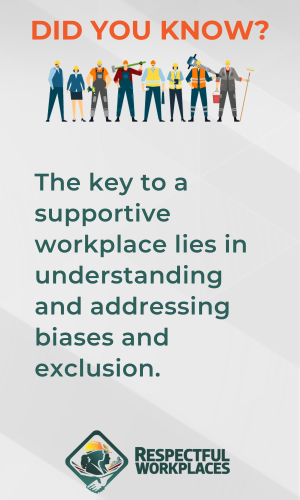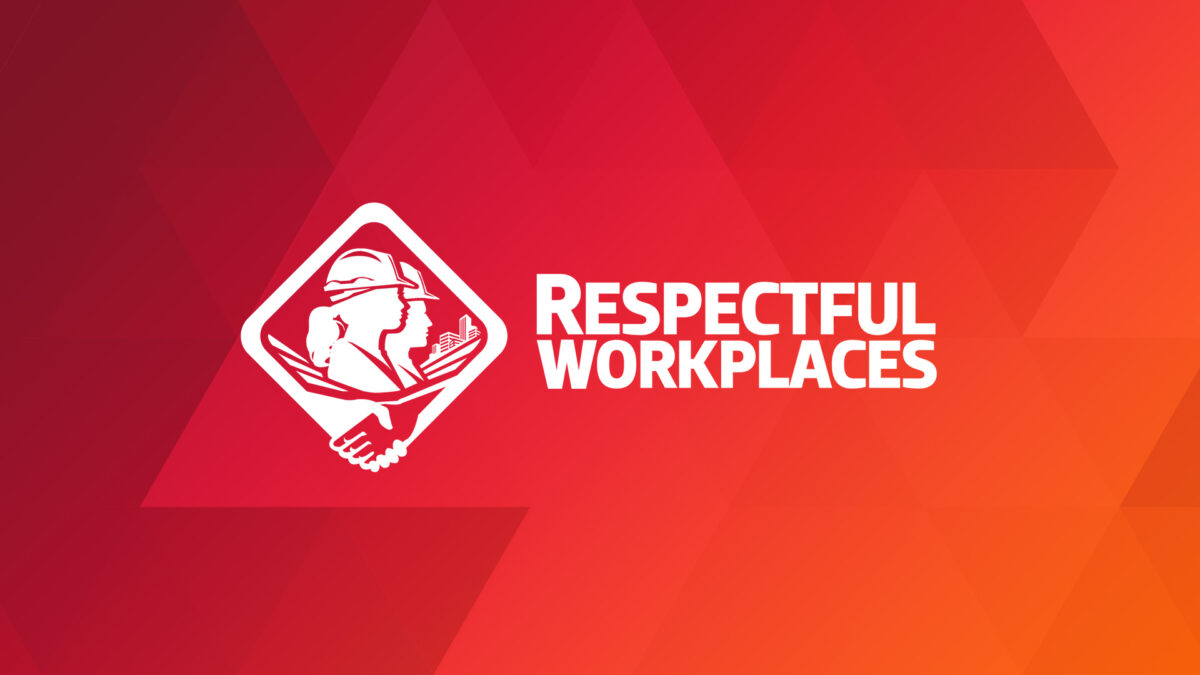Understanding your role in creating inclusive workplaces

Organizations often struggle with how to create and sustain inclusion in the workplace. What they don’t understand is that there is actually very little they can do to guarantee an inclusive workplace.
The key to creating supportive workplaces, where everyone can thrive, lies in the people that occupy that space.
Understanding exclusion to appreciate inclusion
Everyone in an organization should go through the same training, including those in leadership positions. Leaders aren’t magical creatures, blessed with all the universe’s knowledge; they’re human, which means they are subject to the same foibles and flaws as everyone else. Just because you’re a “leader,” doesn’t mean you’re free from bias, nor that you have all the answers.
If a person doesn’t have exposure to, or personal experience with, a particular equity-deserving group (women, Indigenous people, people of colour, 2sLGBTQI+ people, people with disabilities, etc.), how can they be expected to have the knowledge required to create inclusive spaces? They can only learn about it through education.
Everyone in an organization needs to understand three things:
- What is exclusion, and how does it show up in our workplaces and other spaces? If you’ve never experienced discrimination, how will you be able to recognize it when it does occur? If you’ve never experienced sexual harassment, how can you recognize it when someone says they’ve been harassed? If you’ve never experienced racism, when you’re told it happened to someone, do you question it? People need to understand what exclusion looks like to identify it when it happens.
- What is the implication of exclusion? There is always an implication of exclusion: lawsuits, human rights complaints, lower engagement, higher voluntary turnover, higher safety incidents, and lower productivity, not to mention brand and reputation damage. While most would think those things only affect the employer, the truth is they impact everyone in the organization. Lower productivity impacts everyone. Safety impacts everyone. According to the Occupational Safety Group, the average cost of a safety incident is $117,000. People need to understand that exclusion isn’t a public-relations issue; it’s a business issue, and it’s an issue that impacts everyone.
- People need to understand their role in creating an inclusive space. When sexual harassment, racism, or homophobia occur in your workplace, how do you react? What steps do you take? How do you address it? Everyone has to understand the part they play.
Education is critical
The one thing employers can do to contribute to an inclusive workplace is to educate their people. As employers, you can’t force people to be inclusive or change their perspectives and opinions. But what you can do is require every employee to complete required training. For people to understand their role in creating inclusive spaces, they need to be taught what inclusive behaviour looks like. While that education may not change people’s beliefs, it will help them to understand what is expected of them as it relates to your organization’s commitment to inclusion.
Things to consider with your education on inclusion, diversity, equity, and accessibility:
- One-and-done isn’t enough. You can’t put people through a lunch-and-learn or anti-Black racism and expect people to understand how to be anti-racist (as one example). You have to invest time and money, which means prolonged and repeated education.
- Education has to be experiential. Theory is essential, but forgettable. Learning is significantly more impactful when you take employees on a learning journey that shows them how to change their behaviour to be more inclusive.
- It must be tangible. People need to understand specific actions they can take to be more inclusive. Then, you need to reinforce that behaviour change over and over again.
Inclusion in the workplace is an ongoing process, and success is contingent on everyone taking an active role. The reality is that everyone can be a leader. Just because you don’t have the title, doesn’t mean you’re not a leader. Being a leader means taking a stand and setting the tone. Being a leader means taking pride in your work, and understanding that workplaces are an ecosystem where everyone has to succeed for anyone to succeed.
Michael Bach is an author and speaker, a thought leader in inclusion, diversity, equity, and accessibility, and an IDEA consultant to BuildForce Canada.

Respectful and Inclusive Workplaces
